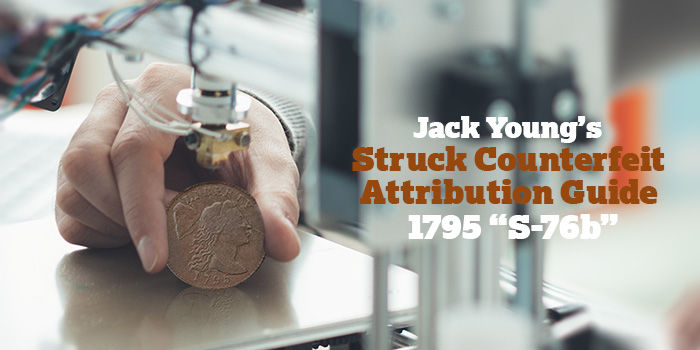
By Jack D. Young, Early American Coppers (EAC) ……
This installment starts with a 2012 internet-listed example deemed a counterfeit and removed from that venue; it was further discussed in the Coin Community Forum and labeled a “Chinese” 1795 large cent. Since I was already full in chasing these latest struck fakes, I decided to go to the source and reached out to the seller to see if it was still available…
* * *

After some casual investigation focusing on a member of the “band of bad internet sellers”, a group I constantly review for possible suspect coin varieties, I ran across an entry from the Coin Community Forum posted back in May 2012 concerning a suspected fake 1795 large cent (Sheldon variety S-76b).
After reviewing the seller and his feedback profile I decided to go directly to the source and reached out to him to see if it was still available; he emailed me back with an acknowledgement he still had a “1795” and attached pics. This actually linked me to his Chinese internet website, which I couldn’t navigate and I felt lucky to just sign off (after downloading the pics). The images included the 1795, an 1806 half cent (later proven to be a struck fake, but that’s another story for another time!), a Hawaiian cent and some miscellaneous silver coins. I sent the image of the Hawaiian to my friend Nick T. to review against his data base of “suspect/counterfeit” examples (from his March ’16 EAC Copper Notes post) and of course he came back that it matched the others, and added it to his list.
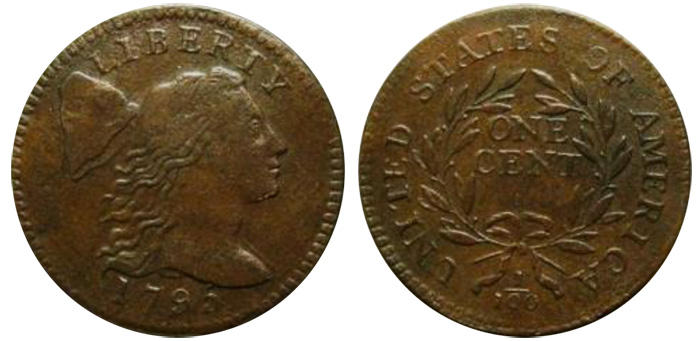
As I continued to try and negotiate a deal on this one, perusal of current internet listings brought the following example under the spotlight:
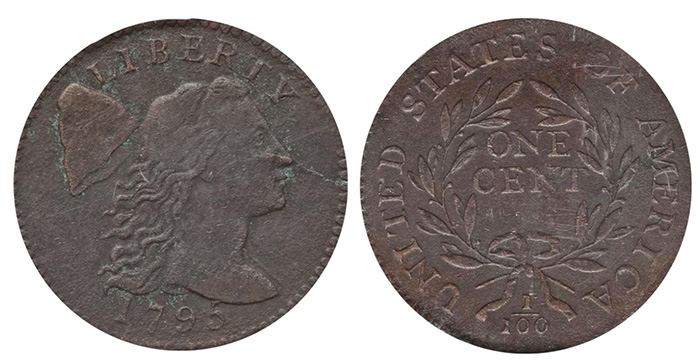
Internet and auction house example
Noticing what appear to be sister marks on this one compared to the “forum” example, as well as characteristics common (to my eye) with a couple of other documented fakes, I notified the seller of my concerns and forwarded my thoughts to my friend Gary S. He posted it on the EAC main Facebook site “Copper Notes” and started a very lively discussion; he also continued conversations with the seller who decided to send the “coin” back to the auction house from where he purchased it for their review. Per Gary’s post the seller took this example back to the source and noted one of their graders looked at the coin and thought it was suspect. The bottom line is that it was returned to the TPG for their assessment and determined to be counterfeit.
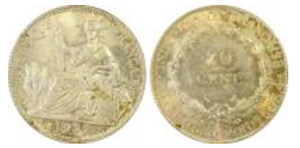 Note: An interesting note about this one is I understand it was submitted and certified in Paris, France. Running my usual perusal of certs around the subject one brought up a French Indo China 20C…
Note: An interesting note about this one is I understand it was submitted and certified in Paris, France. Running my usual perusal of certs around the subject one brought up a French Indo China 20C…
From there additional investigation resulted in “discovering” an apparent thirrd example, this one
from the January 2013 Americana auction where one of the fake “S-158s” was also sold – I think it
would be interesting to know who the consignor was!
And as these investigations seem to all go, continued research resulted in finding additional examples for review; and, it has always proven important to develop the timeline to help
organize and sort out one from the other.
Timeline for 1795 “S-76b” Large Cent:
- May 2012 Internet example listing removed as a counterfeit (posted on the Coin Community Forum)
- Jan 2013 Americana Sale example TPG graded VF Details Environmental Damage
- Feb 2013 Internet example sold – may be same as # 1
- Feb 2013 TPG graded Env. Damage – XF Details; listed in Sept 2013 Auction- may be same as # 2
- Nov 2013 Internet example
- May 2015 Auction; TPG graded Env. Damage – VF Details
- Chinese seller example – image emailed to author
- 2017 Internet sale (raw example – owned by author) shipped via the Netherlands
Reviewing images along the timeline starting with the 2012 “Chinese” example and comparing them to the Jan. ’13 auction example show both common sister marks as well as differences.
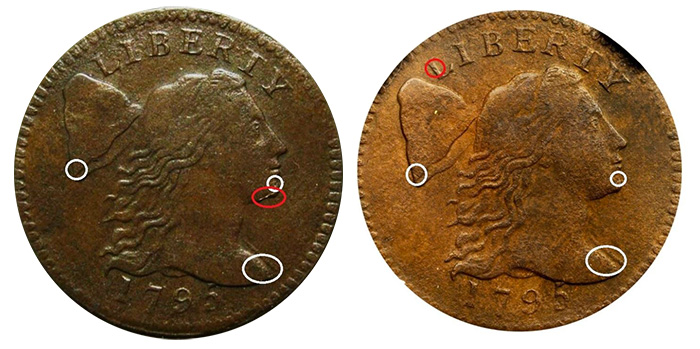

2012 “Chinese” example # 1; Jan 2013 Americana Sale example # 2
Comparing images of the 2012 example to one sold February 2013 on the internet show that these
appear to match, including the “pit” at the bottom reverse rim.
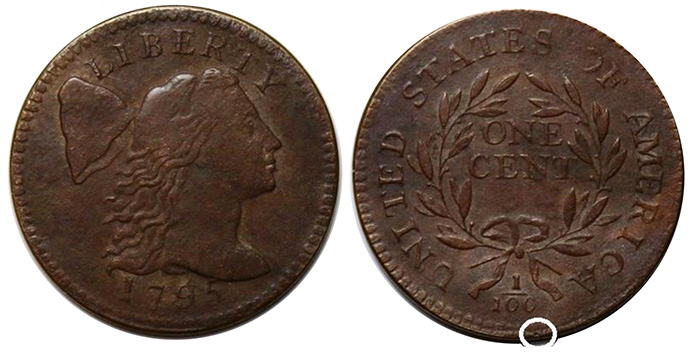
Feb 2013 Internet example # 3
Apparently a second try on the internet selling venue was the charm for this seller…
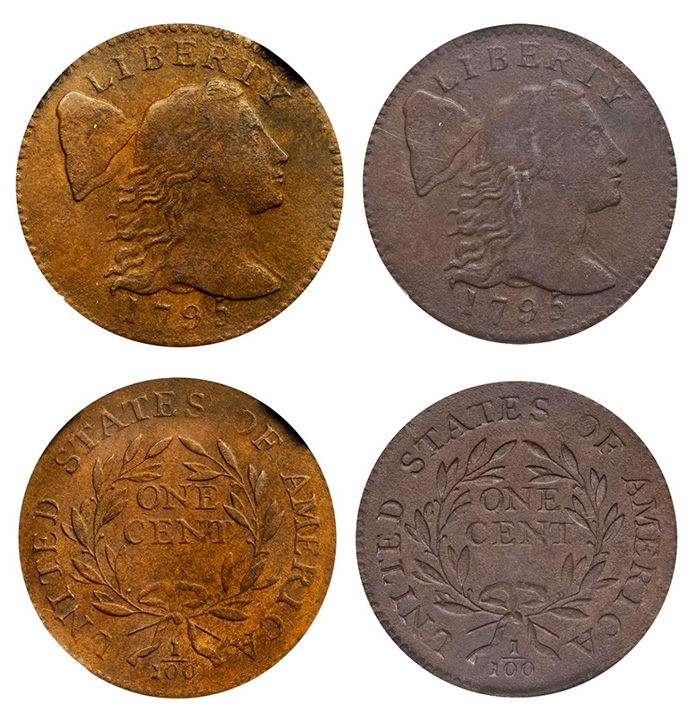
Jan 2013 Americana Sale example # 2; Feb 2013 TPG graded example # 4
Based on all of the common sister marks and apparent similar toning it is very likely that these are the same example, broken out of one TPG holder and resubmitted for a possible upgrade, and this was the consensus of commenters on the Copper Notes post of these two (disregarding the obvious color differences between these two sets of images; images alone can be very deceiving!).
Moving on to the internet and auction house example it is apparent that this is unique in the documented group as a result of the prominent “planchet flaw” from the face to the rim, but it does show many of the sister marks of the other examples.
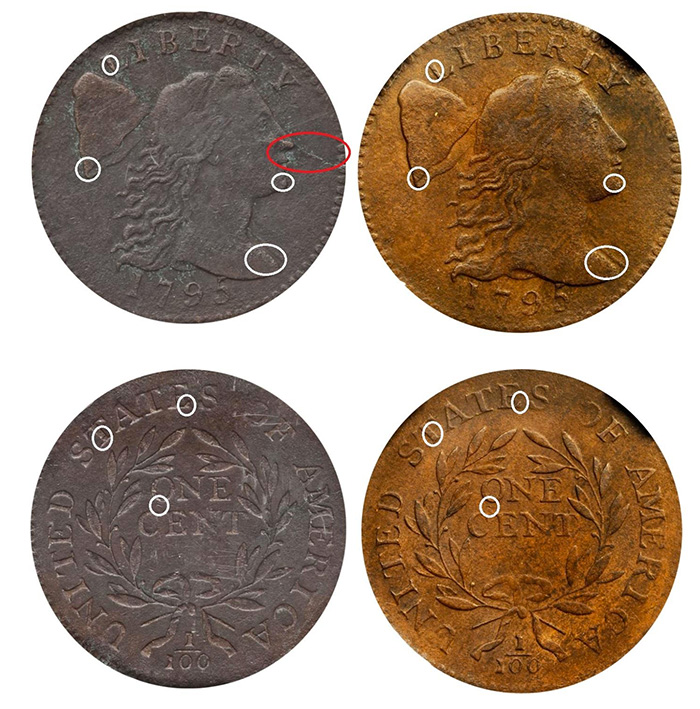
2015 Internet and Auction House example # 6; Jan 2013 Americana Sale example # 2
During the research process we have developed in reviewing possible new varieties of struck fakes, we use overlay software to try and discern detail differences to a known genuine example.
For this I turn to a fellow EAC’er. I supply the suspect images and he provides overlay images to a known genuine example and summary commentary. In this case we ran several of the images compared to his reference.
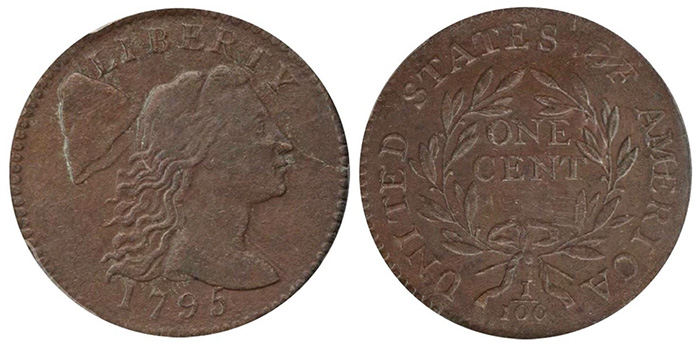
Dan’s overlays over known authentic example
“I don’t really see anything wrong. I used the Sargent coin, in the ANS for almost 70 years, for my base. The base photo I had was nice and sharp, so I put more of the other photo into the overlay, like 70:30. As an example, the base obverse was lit from the left, so bright edges of the letters still show up at the left, while the picture is still more of the coin in question. The R of LIBERTY might be a pixel off, but everything basically aligns. The reverse just overlays with no problem.”
As previously stated, this example was purchased back on the TPG’s guarantee and the seller was reportedly made whole. It was removed from the slab and brought to EAC’s 2016 convention.
It was definitely interesting to see this one raw and “in-hand”, as I was one of the members in attendance afforded the opportunity to review it there.
There were other “tells” that this one is not genuine when reviewed “raw”, but these are beyond the scope of this article.
Just a side note, this was the example that lead to creating a new Facebook group outside of Copper Notes focused on the study of everything counterfeit known as the “Dark Side“. It is open to non-members of EAC with an interest in participating in a FB forum on this subject.
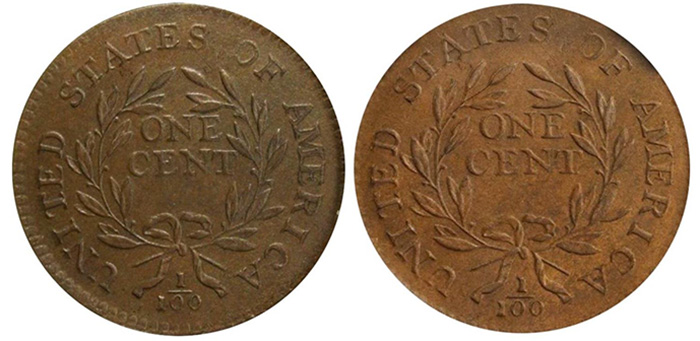
2012 “Chinese” example # 1; Jan 2013 Americana Sale example # 2
Dan’s overlays over known authentic example:
“I give up, if those coins are fakes, they were not made by the guy who has to retouch and ends up with displaced, distorted or questionable details. I’ll attach the reverse photos you sent joined with a good reverse, changed to a different coin, the one I had been using was weak on the lower right quadrant of the wreath, this one better struck”.
I think Dan’s point was if any of these are counterfeits then they are very well done!
And now, back to the original story line. The latest image of the “1795” from the seller in China
was slightly different than the original example from 2012, sporting a unique planchet defect
over the “R”.

Poor image from Chinese Internet Seller example # 7
The planchet defect matches an example sold in an internet venue in November 2013, but both sets of images are too poor to properly review for many common sister marks – may be another chapter in this continuing developing story!

Nov 2013 Internet example # 5
The story could have ended here, as the Chinese seller stopped responding to my emails and a deal never met. But, fast forward to 2017, as I was approached by a differently named seller (actually similar email names) and asked if I would be interested in purchasing a 1795 large cent!
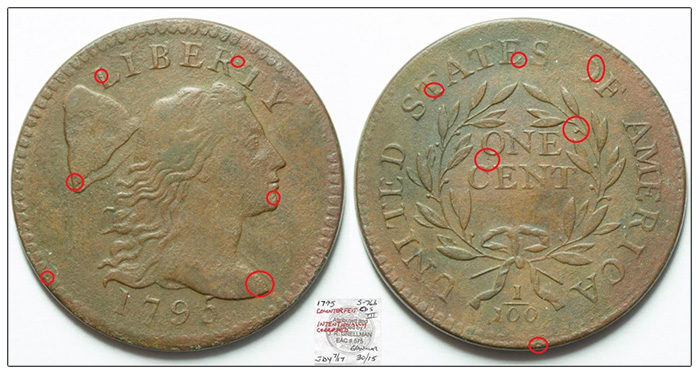
2017 Internet sale (raw example # 8- owned by author) shipped via the Netherlands
This example shows virtually all of the sister marks of previous examples; I sent it to another EAC member expert and received his agreement it is a counterfeit (grade card included). Also note that this example appears to be artificially weathered/corroded to try and make it appear more genuine.
And there really can be no argument where it originated from even though it was routed through The Netherlands!
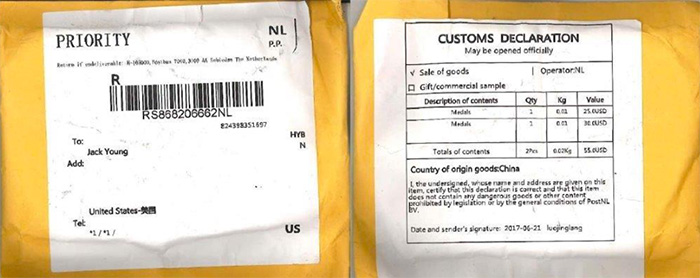
The one-page attribution page follows; it is interesting how many more common circulation type marks become evident with a larger sample size as well as having one actually “in-hand” for review.
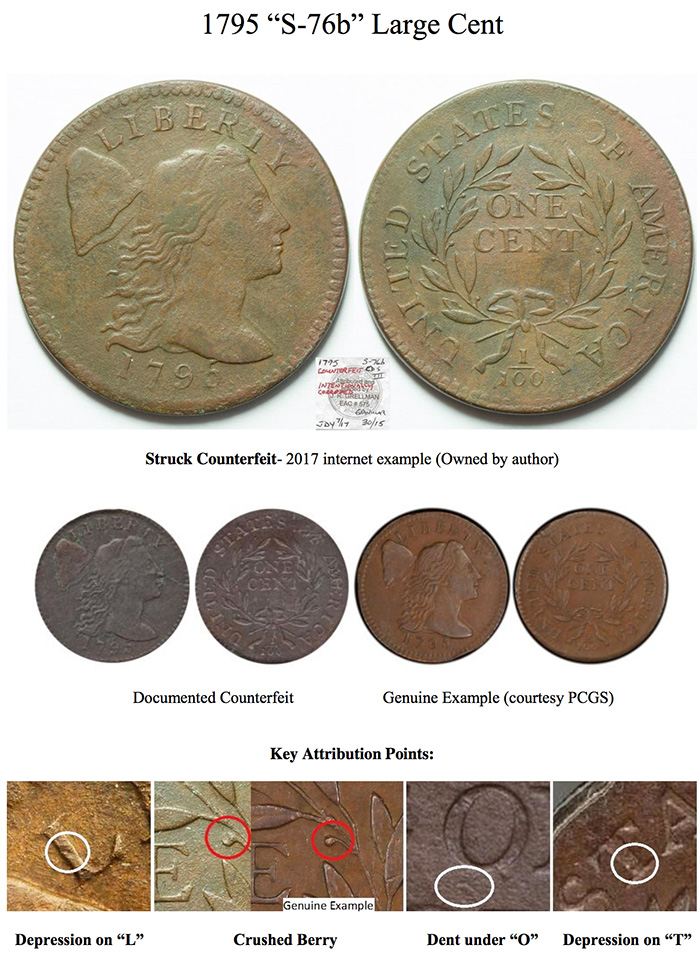
I can again report this investigation has been a collaborative effort, with several EAC members and “Dark Side” participants instrumental in the sharing of pics and info in the effort to “get the word out”, and I would like to thank you! Again I’ve drawn no conclusions about what is real or what is “Memorex”, but am convinced more than one of these is counterfeit. I would ask that the readers be on the look-out for other duplicate examples and REPORT them; remember, the truth is out there!
Best,
–Jack D. Young, EAC 5050





A new example was recently caught in a submission to one of the top TPG’s. There are obviously more out there.